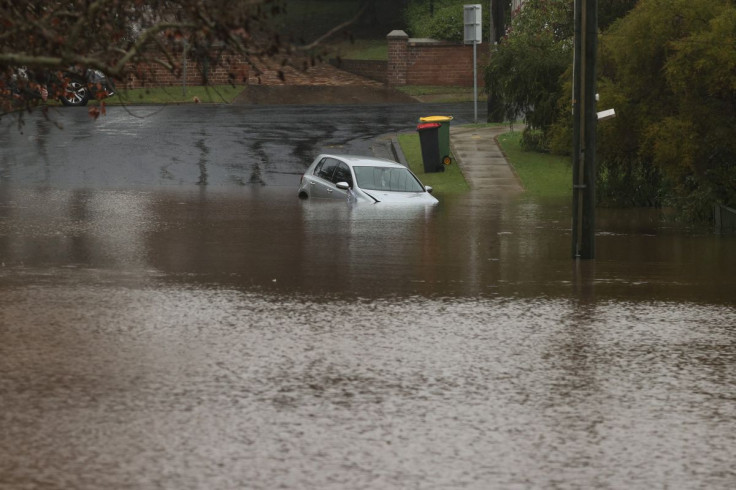Thousands More Evacuate Homes In Sydney Even As Heavy Rains Ease

A wild storm system has moved away from Sydney after pounding Australia's largest city with four days of torrential rain, satellite images showed on Wednesday, although river waters stayed above danger levels, forcing more evacuations.
The year's third major flooding episode saw more than 85,000 people in New South Wales, most of them in Sydney's western suburbs, asked to evacuate or warned they might be asked to do so, up from 50,000 on Tuesday, authorities said.
"This still remains a dangerous situation and we need to respond appropriately," Prime Minister Anthony Albanese told reporters during a visit to the Sydney suburb of Windsor.
He announced a one-off emergency cash payment of A$1,000 ($680) to those hit by the floods.
Yet frustration with the government's response was evident as Albanese visited a volunteer emergency relief shelter.
"Everyone is talking about fixing the same problem ... nothing has happened," a resident of the area told Albanese, in images broadcast by television. "The locals are always prepared, the government is not."
The weather on Australia's east coast has been dominated by the La Nina phenomenon, typically associated with greater rainfall, for two years in a row.
Although La Nina ended in June, weather officials say there is a 50-50 chance it may return later this year.
The intense system of low pressure off the east coast moved to the middle of the north coast of New South Wales, stretching over 300 km (186 miles), with the weather bureau predicting more than 200 mm (8 inches) of rainfall in some areas over six hours.
Since Saturday, torrential rains have dumped waters into river catchments around Sydney, already nearly full before the latest deluge, as authorities warned the floods could last until early next week.
The rains and flooding forced the Australian Rail Track Corp to shut the key rail network carrying coal to Newcastle, the world's biggest coal export port, late on Tuesday, although the operator said it hoped to re-open the line within 48 hours.
Australia's top coal producer, Glencore, said its operations in the Hunter region in New South Wales saw some "short-term impacts" from the weather but gave no details.
A spokesperson for Newcastle port said there had been intermittent disruptions since Monday but operations were expected to return to normal by around midday on Wednesday.
Social media footage showed people using boats to carry fuel and essential supplies to homes cut off by floods. Many piled up sandbags to protect homes and businesses, while emergency crews rescued stranded farm animals.
A cargo ship, the Portland Bay, which had been stranded in treacherous waters since Monday, was finally rescued on Wednesday and towed to port in Sydney.
"This ship came within a couple of hours of shipwreck, an outcome that would have risked lives and environmental disaster," Transport Minister Catherine King said in a statement.
Some parts of New South Wales have received rain of up to 700 mm (28 inches) since Saturday, a figure that exceeds the annual average, but conditions have begun to ease in Sydney.
"We're looking at some dry conditions tomorrow and then Friday, some slight showers returning on the weekend but nothing quite as heavy as what we have seen," weather official Jonathan How told Australian Broadcasting Corp.
($1=1.4710 Australian dollars)
© Copyright Thomson Reuters 2024. All rights reserved.







